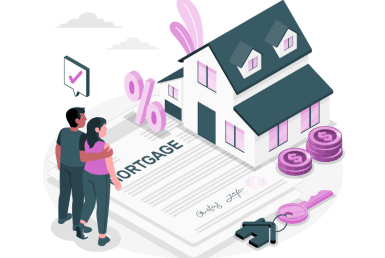An Easy Guide to Financing Your New Home
Want to become a homeowner? You’re not alone. Owning a home is the American dream for most people—but getting financing is a challenge for many of them. The good news is that with the right approach, you can overcome this challenge. Here’s a simple guide to borrowing money to finance your dream home.
Start by getting pre-approved. Pre-approval for a loan is crucial because it allows you to start talking seriously with a real estate agent or a builder. After all, you can’t sign a purchase agreement for a new home until a lender or a bank says they’ll lend you money to finalize the sale.
But how does pre-approval work? When you receive a loan preapproval, you get a letter that says you have been pre-approved for a certain loan amount. This letter will note your interest rate and how much money you can spend to pay for a new home. Yet, you should shop for a home with a sticker price that falls below the pre-approved loan amount—just to be safe. There will be additional costs that will add to the total sum you pay. You don’t want to find out that the final price of the home goes above the loan amount.
In order to become preapproved, the lender you have chosen will require several things:
Find a Mortgage Lender
Start your search for mortgage lenders
With a pre-approval letter in hand, you can spend some serious time shopping for the perfect property. This is where the fun begins!
Basic Steps to Getting a Mortgage Loan
Getting pre-approved is just the first step on your journey to homeownership. There are many more obstacles on the way to getting the funding you need to own property, but we’ll walk you through them all so that you know in which direction to go.
A) INITIAL STAGE: This is the stage during which you’ll get preapproved. Being pre-approved will let you know how big a home you can buy and what features you can afford. Once pre-approved, you are in a secure position to make an offer. Now you can shop and see what homes are available and within your budget. Factor in all the other homeownership costs to know what you can truly afford. Don’t use the amount you were approved for as your guide.
B) APPLICATION: Once you’ve selected your dream home, you will fill out an actual full mortgage application based on the price you’ve agreed on with the builder or seller. You will need to provide many documents to your lender, including:
- Government-issued photo ID
- Proof of bank account balances, retirement savings, property holdings, and investments
- Monthly debt payments
- Income verification (with W-2s, pay stubs, and IRS tax returns)
There are likely other documents you must hand over to the lender as well. They will help you with the full checklist.
C) FINAL APPROVAL: At this stage, your lender will provide binding approval for the loan you have requested. They will also offer you a set of terms that outline how many years your mortgage will cover, your monthly payments, your interest rate, and so on.
D) MOVE IN: When you have everything done, you can close on your home and move in if the home is built and ready.
What About Financing a New Build?
But what if you want to have a builder construct something brand new instead of purchasing a pre-built home? In this case, the process is a little different. When building a new home, you generally don’t need to complete a full mortgage approval before the construction starts. This is because there’s no way to know the actual cost of a newly-built home before it is complete.
Instead, you will likely need to obtain a short-term interim loan. This type of loan lets you borrow money from a lender to pay the home builder and cover costs such as materials and labor. In most cases, you need to pay your interim loan back within 18 months of receiving it. Depending on the type of interim loan you get (see the sidebar), your bank will either roll your interim loan into your permanent mortgage or require that you go through two separate approval processes.
Sound easy enough? Start today by getting pre-approved for your mortgage. Most lenders offer this as a free service. Your dream home could be closer than you think!
TYPES OF INTERIM LOANS
One-time close construction loan
With a one-time close construction loan, you only have to go through the loan approval process one time. Your interim loan gets converted into a permanent mortgage once construction is complete. This method will allow you to lock in your interest rate and reduce your closing costs.
Two-time close construction loan
This loan option means you must complete the interim loan approval process before construction begins. Then once construction is complete, you will go through another approval process in order to get a permanent mortgage. This is a great option if you can put down less than 20% of the home’s final price as a down payment.
Find a Mortgage Lender
Start your search for mortgage lenders
© RGV New Homes Guide, 2023. Unauthorized use and/or duplication of this material without express and written permission from this site’s author and/or owner is strictly prohibited. Excerpts and links may be used, provided that full and clear credit is given to RGV New Homes Guide with appropriate and specific direction to the original content.





